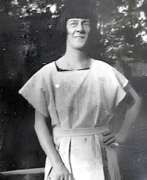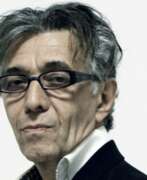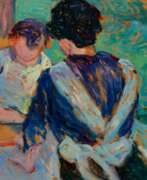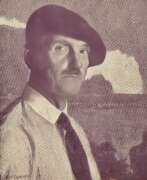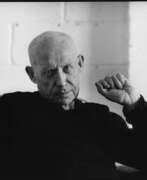Figurative art 19th century
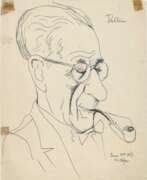

Benedikt Fred Dolbin, born Pollak, an Austrian press illustrator, studied at the Vienna University of Technology and worked for the construction company Waagner, Biro & Kurz during the First World War. He later moved to Berlin, where he worked as a press illustrator and book illustrator. Because of his Jewish origins, he was excluded from the Reich Press Chamber in 1933 and was banned from working in 1935. After emigrating to the USA, Dolbin continued his career His career as a draftsman continued, but he was unable to build on his earlier successes.


André Evard was a Swiss painter and drafter. His special significance lies in the field of constructive art. He is counted among the first artists who did not work figuratively. In the course of his life he produced hundreds of oil paintings, a large number of drawings as well as approximately 2000 to 3000 watercolor and gouache paintings.
André Evard's work is difficult to classify in the categories of art history. He was not committed to any particular style, but rather reverted to the past, mixed styles and invented something new. Art Nouveau, Cubism, and geometric-constructive abstractions all define his work. While in Paris he was part of the avant-garde, he later repeatedly withdrew to representational painting.
On the one hand, the play of forms and colors leads to highly expressive representational landscapes, on the other hand, fascinating still lifes emerge from the clear reduction, which show unusual color combinations and completely new object-space relationships. In doing so, he always exposed himself to the risk of a stylistic break, which, however, is the special feature of his artistic oeuvre. He painted abstract when hardly anyone painted abstract and returned to representational painting when Abstract art dominated.




Käthe Kollwitz (born as Schmidt) was a German artist who worked with painting, printmaking (including etching, lithography and woodcuts) and sculpture. Her most famous art cycles, including The Weavers and The Peasant War, depict the effects of poverty, hunger and war on the working class. Despite the realism of her early works, her art is now more closely associated with Expressionism. Kollwitz was the first woman not only to be elected to the Prussian Academy of Arts but also to receive honorary professor status.
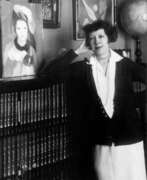

Marie Laurencin was a pivotal figure in the Parisian avant-garde, a French artist renowned for her distinct approach to painting. Unlike her contemporaries who embraced the bold facets of Cubism, Laurencin carved a niche for herself with a palette of soft pastels and a focus on ethereal female forms. Her work, embodying an enchanted, feminine world devoid of masculine presence, was revolutionary for its time, offering a sanctuary of female harmony that was both subtle and profound.
Laurencin's oeuvre extends beyond paintings to include watercolors, drawings, and prints, with notable works such as "Les jeunes filles" and "Portrait de Mademoiselle Chanel" finding homes in prestigious institutions like the Museum of Modern Art in New York and the Musée de l'Orangerie in Paris. Her legacy is further cemented by the Musée Marie Laurencin in Nagano, Japan, the only museum dedicated solely to a female painter, showcasing over 600 of her pieces.
Her approach diverged significantly from the norms of Cubism, incorporating a distinctly feminine aesthetic through the use of pastel colors and curvilinear forms. This unique style set her apart from peers and positioned her as one of the few female Cubist painters, alongside figures like Sonia Delaunay and Marie Vorobieff. Laurencin's artistry was not just an exploration of femininity but a celebration of it, challenging the dominant artistic narratives of her time.
The critique of Laurencin's work for its deliberate embrace of femininity and decorative qualities overlooks the radical essence of her aesthetic. Her paintings, characterized by serene and charming depictions of women, argue for a creative space where the feminine is not just visible but central. Works like "The Fan" and "Spanish Dancers" exemplify her ability to create intimate, self-sufficient worlds that engage the viewer in narratives of absence, longing, and female solidarity.
For collectors and experts in art and antiques, Laurencin's work offers a nuanced understanding of early 20th-century modern art movements through the lens of femininity. Her contributions to art history reflect a bold reimagining of the female form and the spaces women occupy, both in the physical and imaginative realms.
To stay informed about new product sales and auction events related to Marie Laurencin, sign up for updates. This subscription ensures you remain at the forefront of the latest developments and opportunities to acquire works by this groundbreaking artist.


Cornelis Johannes Maks, known as Kees Maks, was a Dutch painter.
Kees Maks was known for his paintings of fashionable nightlife. Circus acts, dancing couples and garden parties were unknown subjects in Dutch art. The lifelike subjects and the light-hearted way of painting in simplistic masses of bright, vivid colours made a lasting impression on the public.
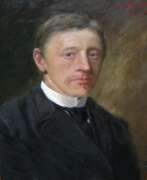

Karl Otto Matthaei was a German painter, draftsman and graphic artist. He completed his training from 1891 to 1900 at the Grand Ducal Academy of Fine Arts in Karlsruhe, which was one of the leading landscape school in Germany. His first teacher was Franz Hein from Altona. His first study trips took him to the Karlsruhe area. Around 1894 he lived in the Grötzinger painters' colony in an artist community. In 1895, art students from Karlsruhe founded an artists' colony in Duhnen, Altenwalde and Altenbruch (Cuxhaven), of which Karl Otto Matthaei was a founding member. Karlsruhe was Matthaei's official place of residence until 1916, although this was regularly interrupted by his annual study and painting visits to the North Sea and the Lower Elbe region. He then moved his residence to Bremen. Matthaei was chairman of the Bremen Artists' Association for many years and was made an honorary member in 1924. In 1930 he was appointed Honorary President of the Association of Northwest German Artists.
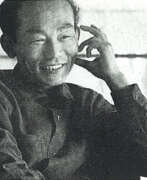

Yoshishige Saitō was a Japanese visual artist and art educator.
Saitō was a seminal figure in Japanese art of the 20th century and a crucial link between the prewar avant-garde and postwar abstract art in Japan. From early on, he was exposed to Post-Impressionism and the avant-garde movements, including Russian constructivism and European Dada, as well as Western literature and Marxism. In the 1930s, he became active in the avant-garde art circles, while pursuing abstraction in paintings and wood reliefs, most notably the relief series of Kara kara and Toro Wood. All of his prewar works and related materials were lost to an air-raid fire in 1945, some of them were reconstructed in the 1970s.
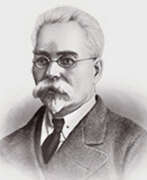

Viktor Ivanovich Zarubin was a distinguished painter and scenographer, remembered for his contributions to both Ukrainian and Russian art. Born on November 13, 1866, in Kharkiv, which at the time was part of the Russian Empire, Zarubin's career spanned the late 19th and early 20th centuries. His diverse heritage is reflected in his works, which often depict landscapes imbued with human figures, capturing the essence of the regions he represented.
Zarubin's artistic prowess was not limited to painting; he was also a skilled graphic artist and watercolorist. His ability to blend the serene beauty of landscapes with the nuanced portrayal of figures earned him recognition in the art world. His works have been featured in various galleries, highlighting his significance in the artistic community and making him a subject of interest among collectors and auctioneers.
